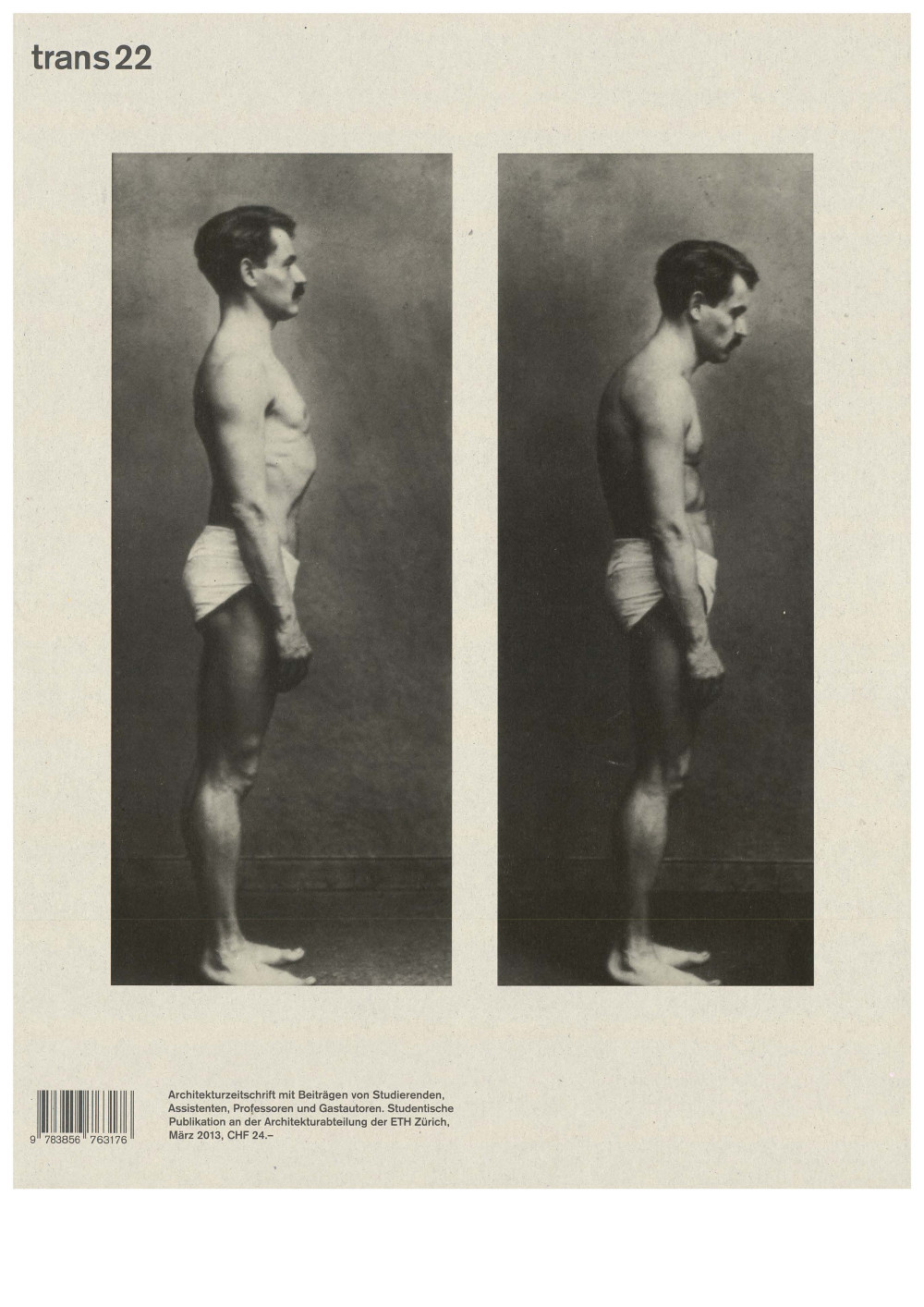When we presented the transMagazine to the ETH Department of Architecture as part of its evaluation last fall, the first question was why we still produce a print version instead of following the general trend of publishing exclusively online. The question is justified, especially in light of the recent news about the end of the «Financial Times Deutschland» and the «Frankfurter Rundschau». So why are we persisting with this supposedly moribund medium?
For us, publishing in book form is a question of conviction. Print and online media are equally established nowadays. And thanks to new technologies it has become very easy to access and view digital content. However, we are convinced that content needs to be in the right form. By deciding to print the magazine, we are countering rapidly-changing headlines with the advantages of slowness. We create magazines for readers who want to take the time to share their passion for architecture and language with us.
STANCE
The articles, interviews and photo essays that were created for trans22 in the last few months treat this issue's theme in various ways. Nevertheless, certain aspects recur. Especially in a time of - subjectively perceived or actually detectable - disorientation, the question of stance, attitude, or posture seems to have become increasingly significant. At the same time it becomes clear that the answer does not lie in distinguishing «good» from «bad» stance - just as there is no «good» or «bad» architecture.
You might already realize what we are alluding to. The photo printed on the cover was taken for the Deutsche Hygiene-Museum for health education purposes in the 1920s. It demonstrates «good» and «bad» posture. The illustration ignited an animated discussion among the editorial board: Does it do justice to the content of the magazine? Does the cover elicit negative associations? Can it be misunderstood?
And if so, how will we deal with that?
We decided on this picture for the title page because it makes the shortcomings of the term «stance» very clear. In doing so, we realize that we have initiated a controversial debate.
We understand «taking a stance» not as disciplinary action in terms of blind obedience, but rather as the decision to responsibly defend a particular position and the readiness to withstand any opposition that might arise.
Contributors
Flora Ruchat-Roncati, Philip Ursprung, Tobias Wootton, Christophe Schuwey, Jacques Blumer, Benjamin Leclair-Paquet, Camillo Boano, Léopold Lambert, Lindsay Blair Howe, Miroslav Sik, Daniel Fuchs, Bonnie Qian, Mélanie Gobet, Sabine von Fischer, Ernst Gisel, Luigi Snozzi, Roger Diener und Jacques Herzog, Metaxia Markaki, Holger Schurk, Manfred Wolff-Plottegg, Benoît Sallé, François Charbonnet, Made in, Eelco Hooftman, Connie van Uffelen, Martin Dumont, Andrea Alberto Dutto, Philipp Kuntze, Peter Zumthor, Pierre Voélin, Hans Kollhoff, Andreas Thuy
Editorial Team
Benedikt Hengartner, Christopher Metz, Fabian Reimer, Stéphanie Savio
Table of content
Architektur politisch machen?
L'illusion de la nouveauté : l'exemple d'Hugo
Das Material ist immer schuldig
No constraint or the potential to not do
Lignes de pouvoir - pouvoir des lignes
Persistence distance architecture
Nicht reine, angewandte Architektur!
Plagiarism
We are all quantum made
Corps dansant en représentation : une sincerité mise en scène
Just the two of them : on the positions of Denise Scott Brown and Robert Venturi
Architektur in der Krise : Philip Ursprung im Gespräch
Spending days in Non-Topia : a story written for the place of Non and those who happen to be trapped in it
Die Befragung der Gegenwart : Haltung und Entwerfen im Zustand der Desorientierung
Mit Haltung in Käfighaltung
Fracture numérique
"Every word is a mask"
The importance of being landscape
Toiling away in Zürich
The architect as a producer : Ugo La Pietra and the theory of the unbalancing system
Lachsleder und Rindentuch : für eine neue Handwerkskultur
Da ist gar nichts schweizerisch an dieser Idee.
De l'émerveillement : l'unique position la seule : penchez- vous, penchez-vous davantage...
Stolz : eine urbane Tugend
Wir sind Architekten
